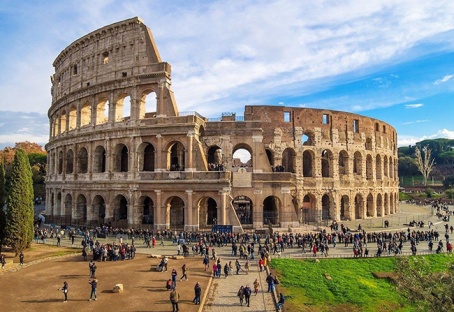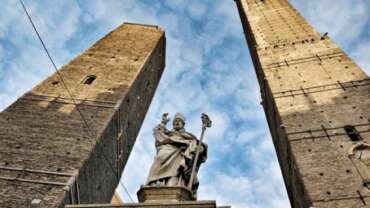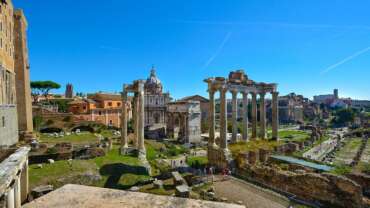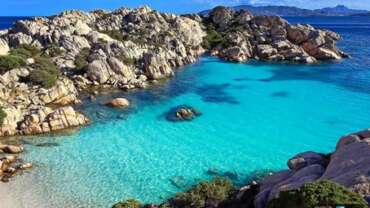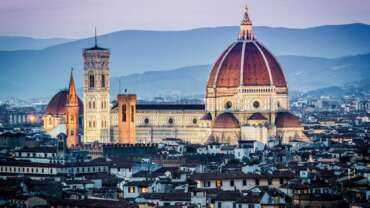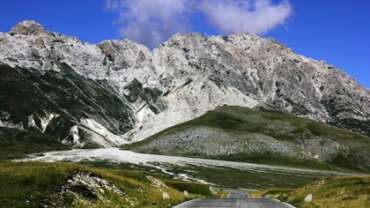Central Italy
Lazio – are rivers, streams and ancient villages that embrace the eternal city
Territory of Lazio
The territory of Lazio extends from the Apennines to the Tyrrhenian coast, is mainly hilly (more than 50% of the total) and mountainous and the few flat areas are concentrated in the coastal area. The landscapes of the region are characterized by great heterogeneity. The highest mountains of the region can be found in the Laga Mountains, precisely in the 2458 m of Mount Gorzano their highest point.
Useful information about Lazio
Lazio is a region of central Italy with the capital Rome, which is also the capital of Italy. The other provinces of the region are Frosinone, Latina, Rieti and Viterbo. Lazio borders Tuscany to the north-west, Umbria to the north, Marche to the north-east, Abruzzo and Molise to the east, Campania to the south-east and the Tyrrhenian Sea to the west. Its territory includes that of the enclave of Vatican City.
Art and culture of Lazio
The region of Lazio has had a considerable artistic importance at national and international level at various times in its history: that of Roman art, divided into archaic art, republican art and imperial art, that of early Christian and medieval art, that of the Roman Renaissance, represented by Michelangelo Buonarroti and Raphael and that of Baroque and Mannerist art, which still had Rome as its main center, with personalities such as Caravaggio, Francesco Borromini and Gian Lorenzo Bernini. This great artistic importance is due to the triple soul of Rome as the cradle of the Roman Empire, the historic seat of the Catholic Church and, more recently, the capital of Italy.
Food and flavours of Lazio
Food and flavours of Lazio are the result of a homemade cuisine made of simple ingredients carefully prepared to create recipes famous all over the world. To mention absolutely are the first courses typical of this region among which stand out the Carbonara and the Amatriciana, recipes that have far exceeded national borders being appreciated throughout the world. Second courses include Abacchio, Trippa alla Romana and Coratella with artichokes (the latter being the protagonists of many other recipes). In addition, among the food products should be mentioned the porchetta di Ariccia, ricotta and pecorino romano.
Places and tours of Lazio
There’s a lot to see in Lazio. Many places and tours of Lazio are linked to its historical importance, which has left evidence of the Roman Empire and its greatness everywhere: just the city of Rome is rich in heritage, monuments and archaeological sites such as the Colosseum and the Imperial Forums and many others are scattered throughout the region: just think of the Necropolis of Monterozzi, Tarquinia or the excavations of Ostia Antica.
Marche – is harmonious forms, cliffs and caves that alternate with unforgettable beaches
Territory of Marche
The territory of the Marches tends to be homogeneous: mainly hilly (the Marches region is one of the most hilly regions in Italy), most of the towns are developed in the hills. There are many plots of land, often surrounded by forests of centuries-old oaks. Among the major mountain ranges we can mention the massif of the Sibilini Mountains, among the highest in the entire Umbria-Marche Apennines, while the plain areas are concentrated near the coast, overlooking the Adriatic Sea, and in the areas of the valleys near the mouths of rivers.
Useful information about Marche
The Marches are a region of central Italy. The regional capital is Ancona, the other provinces are Ascoli Piceno, Fermo, Macerata, Pesaro and Urbino. It is bordered by Abruzzo, Emilia-Romagna, Lazio, Tuscany, Umbria and the Republic of San Marino and is washed by the Adriatic Sea on its eastern side.
Art and culture of Marche
The region boasts a rich history of internationally famous artists and academics: Raffaello Sanzio, a painter from Urbino who was among the greatest interpreters of the Renaissance, and with him other artists such as Gentile da Fabriano and Donato Bramante, but also Gioachino Rossini, one of the greatest opera composers in the history of music, Giacomo Leopardi, one of the greatest poets of the Italian nineteenth century and one of the most important figures in world literature, and Maria Montessori, known for his revolutionary teaching method appreciated and applied throughout the world. The lives of these illustrious figures testify to the great cultural importance that this region has had in the various eras.
Food and flavours of Marche
The food and flavours of the Marche region are based on products from both the land and the Adriatic Sea. Among the typical products there is a wide choice of cold cuts, sausages and cheeses: Fabriano salami, Ciauscolo, Carpegna ham, Casciotta d’Urbino and fossa cheese, to name a few. The recipes of the Marche region testify the preference of the inhabitants for a cuisine with simple and robust flavours: among the favourite meats there is the pigeon, protagonist of many recipes, and as many recipes have as protagonists mussels, the bombetti (molluscs typical of that area of the Adriatic) and stockfish, such as the famous fish soup. There are also many dishes based on frying, especially the olives from Ascoli.
Places and tours of Marche
There are many places and itineraries in the Marches not to be missed: let’s start from the main cities, Ascoli Piceno the city of travertine, Fermo with its Roman cisterns, Macerata the city of opera and the Sferisterio, Ancona the Doric city, Pesaro and its historic center and finally Urbino, a UNESCO World Heritage city. There are, moreover, numerous monuments worthy of note immersed in the landscapes of the Marche: this is the case of the Temple of Valadier and the Abbey of San Vittore delle Chiuse, immersed in the heart of the caves of Frasassi. Finally, the Marches are a pole for seaside tourism: among the most accredited destinations is mentioned San Benedetto del Tronto, but there are many other wonderful places, for example those of the Riviera del Conero.
Tuscany – is hills and ancient villas that surround wonderful cities of art
Territory of Tuscany
The territory of Tuscany is bordered by Liguria, Emilia Romagna, Marche, Umbria and Lazio and its 627 km of coastline (397 km of continental coastline and 230 km of island coastline) are bathed by the Ligurian Sea and the Tyrrhenian Sea, in which stand the islands of ‘Tuscan Archipelago, whose main island is the Island of Elba. The territory of Tuscany is mainly hilly like many of its most famous landscapes. There are also plain areas, such as the Tuscan Maremma, and the mountain ridges in Tuscany as the Apuan Alps and the famous hills of Chianti, in whose areas is produced one of the most famous wines in the world.
Useful information about Tuscany
Tuscany is a region of central Italy, with Florence as its capital, one of the most famous Italian cities in the world. The other cities of Tuscany are Arezzo, Grosseto, Livorno, Lucca, Massa, Pisa, Pistoia, Prato and Siena and each of them is a wonderful city of art, a medieval village rich in history and culture.
Art and culture of Tuscany
Art and culture of Tuscany have characterized those of Italy and the western world: the region of Tuscany was the heart of Italian literature, here were born and lived the great poets Dante Alighieri, Francesco Petrarca and Giovanni Boccaccio, just to name a few. But the greatest splendor achieved by Tuscany was seen under the reign of the De Medici family, in the period that corresponds to the so-called Renaissance, a historical era characterized by a real cult of the arts that has invested the whole of Italy and that has seen the alternation of sublime artists such as Leonardo Da Vinci, Michelangelo Buonarroti, Raphael, Titian. A real temple and great testimony of the Renaissance (and not only) is the Uffizi Gallery, located in Florence, one of the most famous and important museums in the world.
Food and flavours of Tuscany
Tuscany, like every region of Italy, has a great culinary tradition, based on preparations that have remained unchanged for years. One of the typical foods of Tuscany is bread, strictly without salt. Its importance in Tuscan cuisine is demonstrated by the presence of recipes such as ribollita and pappa al pomodoro, which see it as the absolute protagonist. Other protagonists of Tuscan cuisine are the meats, used for cold cuts and sausages, such as finocchiona or the famous lard of Colonnata, but also game and, of course, the famous Florentine steak. When talking about food and flavours of Tuscany, we must mention its great wine production, which includes some of the best wines in the world: Chianti, Brunello di Montalcino, San Gimignano and Vinsanto.
Places and tours of Tuscany
Listing places and tours of Tuscany is a difficult task: the things to see are many and all beautiful. Museums, churches and monuments are everywhere, just think of the beautiful cathedral of Santa Maria del Fiore, with the beautiful dome of Brunelleschi, or the Tower of Pisa, whose inclination has made it famous throughout the world. But in the beautiful Tuscany there are also a number of natural attractions, such as the lagoon of Orbetello and Val d’Orcia, which host nature reserves, and routes and itineraries that cross them. Among others, in Tuscany there is part of the Via Francigena.
Umbria – is the enchanted region, immersed in the greenery of the sunny valleys
Territory of Umbria
Umbria is a region of central Italy. Located in the heart of Italy, it is the only region not located at the political or maritime borders of the State. The region offers a wide variety of landscapes through the succession of valleys, mountain ranges, plateaus and plains, which constitute the dominant geographical feature. The territory is mainly hilly and mountainous. Umbria borders Tuscany to the north-west and west; Lazio to the south and south-west; Marche to the north-east and east.
Useful information about Umbria
The capital of Umbria is Perugia and the provinces are Perugia and Terni. The major centers are Foligno, Città di Castello, Umbertide, Spoleto, Gubbio, Gualdo Tadino, Assisi, Bastia Umbra, Orvieto, Amelia, Narni, Marsciano and Todi.
Art and culture of Umbria
Art is the essence of Umbria: great artists such as Perugino, Giotto, Cimabue, Nicola Pisano, Arnolfo di Cambio have left their unmistakable mark in various cities of the region that preserves the artistic testimony of its history. The Umbrian Renaissance was one of the fundamental declinations of the Italian Renaissance. Renaissance art made its appearance in Umbria in the first half of the fifteenth century, with the stay of some Florentine artists of the first order, who left their works there.
Food and flavours of Umbria
Umbrian cuisine is founded by a long tradition with origin from the Umbrian and Roman civilizations. Among the typical dishes of Umbrian cuisine, there are certainly first courses based on mushrooms and truffles. Among the varieties of egg pasta typical of Umbria there are Agnolotti, a stuffed pasta, similar to ravioli but crescent-shaped with meat filling. Among the main courses, fried lamb and pheasant in brine are very popular and appreciated. The Umbrian culinary tradition is also made of a wide variety of cold cuts, sausages and cheeses, many of which have a protected designation of origin and wines, from the whites of Orvieto and the Martani mountains to the reds of Montefalco, Bastardo and Amerino.
Places and tours of Umbria
Umbria, also called the green lung of Italy, is a land rich in natural landscapes, forests, mountains, lakes and rivers. The region offers 6 natural parks. There are many things to see in Perugia: the capital of Umbria is the true cultural heart of the region. The Piazza della Fontana Maggiore, the Palazzo dei Priori, the Cathedral of San Lorenzo are monuments not to be missed, as well as the rich museums that tell the story of the Etruscan and medieval past of the city. Also worth discovering are the villages, among the most beautiful in Italy, such as Assisi. The land that gave birth to St. Francis and St. Clare is both a destination for religious tourism and an artistic destination. Of great attraction are the splendid frescoes by Giotto, Cimabue, Pietro Lorenzetti and Simone Martini, in the Basilica of Assisi. Gubbio, Spoleto, Spello and Foligno are just some of the other destinations to visit in this magnificent region.



